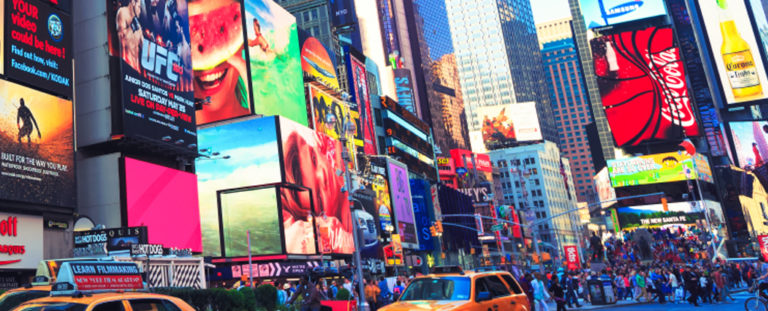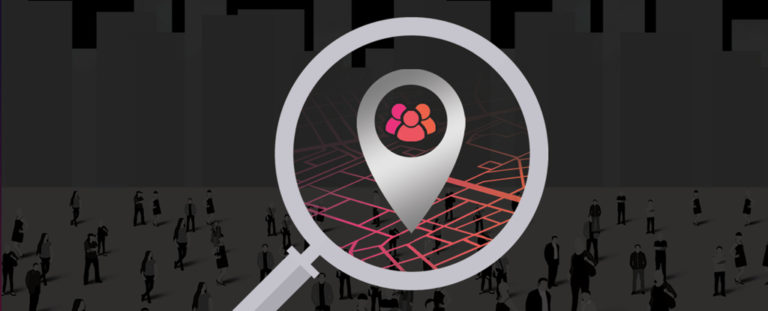Invest in a sustainable future with DOOH
Published: December 23, 2021
The 26th Annual United Nations Climate Conference concluded mid-November after two weeks of discussions from corporate giants and political leaders worldwide on how to best combat the effects of climate change. During the conference, Purpose Disruptors highlighted some key findings from their "Advertised Emissions" report, acknowledging that advertising is "the biggest engine of societal change in existence." Their results found that the industry was responsible for adding an extra 28% onto the annual carbon footprint of every single person in the U.K.
Unsurprisingly, advertising dramatically influences the environment as a $600 billion industry. Advertisements are all around us - inadvertently changing our behaviors and influencing our decisions. This substantial impact is why Purpose Disruptors eagerly demands advertisers to use this "responsibility to shift the sector's role in shaping the current, high-consumption landscape towards a low-consumption alternative."
Advertisers and marketers need to realize the importance of shaping positive narratives into our society. And the mounting weight to reduce their climate footprint is becoming a business imperative, with 88% of the public saying they want brands to make a difference and improve their sustainability initiatives. For businesses to follow through on their environmental initiatives and have a beneficial influence in communities while capturing audiences' attention, one media platform that has positively influenced the climate fight is out-of-home (OOH) advertising.
OOH delivers on net-zero goals and is one of the most influential media channels to benefit the infrastructure and raise a community on a local and nationwide level. Mike Cooper, Global President and CRO at Adomni, wrote, “[OOH] improves the environment before we even get to the day job. What’s more, when brands want a relationship with consumers and place their media dollars in OOH environments, a huge percentage of those dollars usually goes back to the environment.” Unlike other media channels, nearly 50% of OOH’s revenue goes back into the economy, including public infrastructure and job opportunities - making the surrounding environment and communities essential to the OOH business model.
The environmental benefits of digital out-of-home (DOOH) advertising create ‘smarter cities' and the advancement of sustainable surroundings. The ability to seamlessly blend campaigns into the environment while using real-time data to develop contextual messaging allows for greater flexibility and relevancy without the utmost maintenance. For example, Renault Zoe launched a trigger-led campaign based on real-time pollution level data around Brussels and Liege. The electric car company’s goal was to reach their key audiences at the right time while shedding light on their car’s eco-friendly nature. The campaign would be triggered whenever the air quality was poor, displaying dynamic creatives according to the real-time data and then introducing Renault Zoe in the next ad. Web searches for the term ‘Zoe’ increased by 144%, and other brands followed similar campaigns.
‘Smart cities’ are created “where the Internet of things and analytics are applied to public infrastructure, services, and participation in the community,” suggests Dr. Peter Williams, CTO for Big Green Innovations at IBM. For example, the public is provided access to on-the-go information such as the weather and emergency alerts. Programmatic DOOH technology can tap into real-time data in a given location, detect general trends, and create customizable and personalized suggestions. Thus, pairing DOOH and data with a city’s infrastructure can improve the quality of life for urban dwellers while also increasing the economy and development of a city.
For example, Green City Solutions and Visual Art partnered up to improve the air quality in cities while attracting media attention. The two companies integrated small cell and metering technology to create CityBreeze, a large vitalizing moss wall on one side of a 75-inch LED screen. The vitalizing moss's purpose was to clean the air, filtering up over 80% of fine dust while the LED screens allowed advertisers to reach their audience with targeted messaging.
Peter Sänger, CEO of Green City Solutions, said in the release. "In this way, we combine ecology and economy and generate an immediate and sustainable improvement in air quality in cities."
Outdoor advertising is a naturally sustainable advertising platform, significantly diminishing the environmental impact while being an integral component of communities in meaningful and positive ways. From creating urban-garden billboards to installing pollution measurement sensors, OOH and DOOH is a "non-intrusive, relevant, visually heightening way that allows [audiences] to enjoy life and give back to their community," Mike Cooper reinforced outdoor advertising significance. Advertising coupled with outdoor has the power to be a force for good. So what are you waiting for? Make DOOH a part of your marketing strategy today if you haven't already. Contact us at concierge@adomni.com.
Written By: Julia Cramer
To get the latest updates on out of home advertising, digital marketing and technology, follow us on:
Or sign up for our newsletter.






